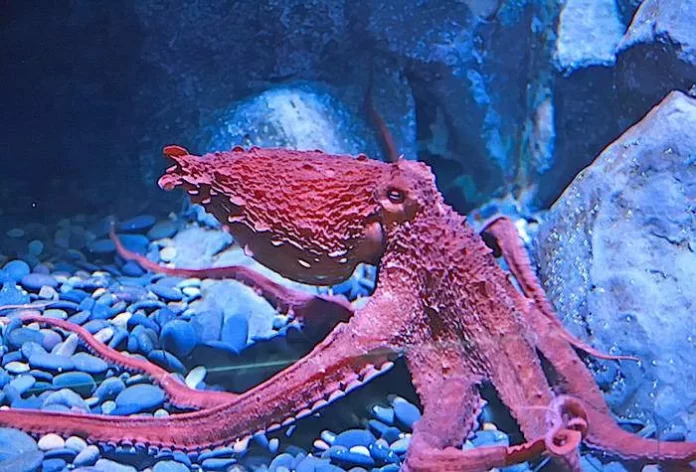Octopuses are extraordinary creatures, and their blue blood is just one of the many unusual aspects of their biology.
The ocean covers more than 70% of our planet’s surface, but surprisingly, only 5% has been explored.
That means there’s a huge part of the ocean, over 95% that is yet to be explored. This leaves a lot of room for fascinating animals that scientists haven’t discovered, and the ocean is filled with them.
One of these extraordinary underwater creatures is the octopus. These clever sea creatures have a lot more to them than just the blue blood flowing through their veins. But in this article, we’ll focus on their blue blood. Keep reading to find out why their blood has such an unusual color.
First things first, let’s get to know the blue-blooded creature
Octopuses are highly intelligent creatures that live in the ocean. They belong to a group of animals known as cephalopods, which include squids, cuttlefish, and nautiluses. Octopuses are known for their ability to change color and texture, and they use this skill to communicate, hide from predators, and even catch prey.
Now, asides from the fact that these intelligent creatures have three hearts, can change their color at will, and grow out their limbs, what sets them apart is their unusual blue blood.
Unlike humans and many other animals, octopuses don’t have red blood flowing through their bodies. Instead, their blood is a shade of blue.
But why is that?
The secret behind this lies in a molecule called hemocyanin. Hemocyanin is a protein found in the blood of many cephalopods, including octopuses. This protein serves a similar role to the hemoglobin in human blood as it helps transport oxygen throughout the body. However, hemocyanin is unlike hemoglobin in color and structure, which is why octopus blood appears blue.
Hemocyanin and hemoglobin transport oxygen from the lungs (or gills, in the case of underwater creatures) to the rest of the body’s cells. In humans, hemoglobin contains iron, which binds with oxygen and gives our blood a red color. In contrast, hemocyanin contains copper, which also binds with oxygen, but gives octopus blood a bright blue hue.
When octopuses breathe, oxygen from the water is absorbed by their gills. The oxygen then binds to the copper atoms in hemocyanin, creating a blue-colored compound. This blue blood travels through their circulatory system, delivering oxygen to different parts of their body. After releasing the oxygen, the hemocyanin returns to the gills to collect more.
The octopus’ advantage
The blue blood of octopuses is not just for aesthetics. It has a huge advantage in their underwater world. Hemocyanin is great at binding with oxygen, even in cold temperatures and low-oxygen environments. This means octopuses can thrive in a wide range of ocean depths, where red-blooded animals might struggle to transport enough oxygen.













